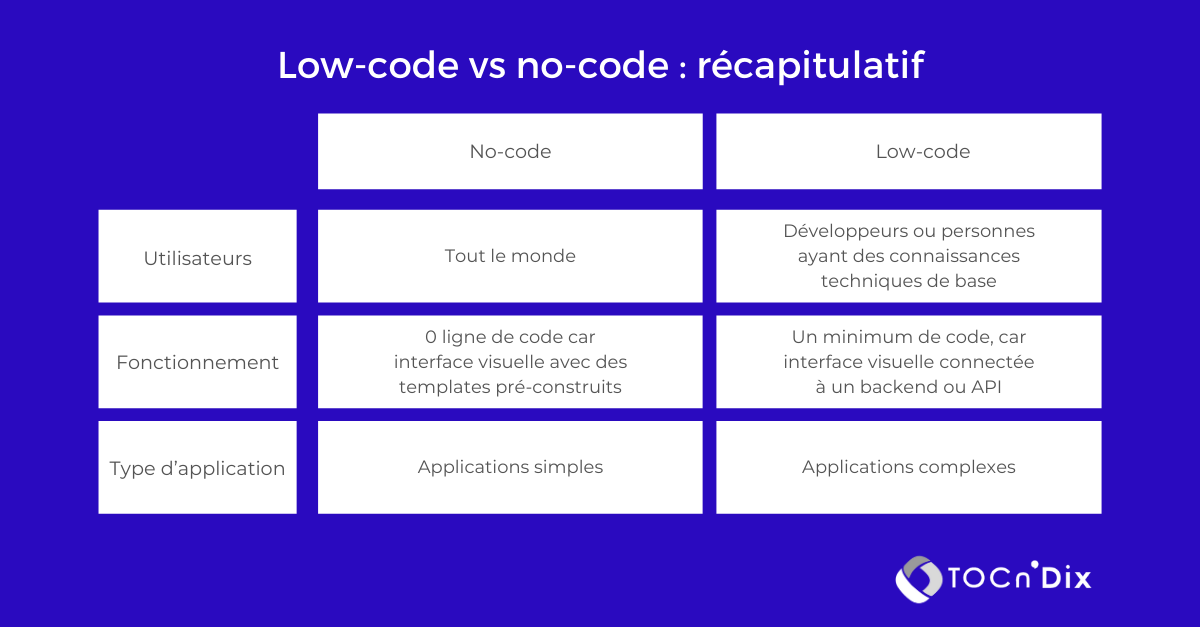LOW CODE & TECHNOLOGY
Low-Code vs No-Code and Traditional Code: what are the differences?
June 27, 2023

Are you about to develop an application and don’t know whether to use low-code, no-code or traditional code? We explain the difference between these development approaches and how to make the right choice…
What are the differences between low-code and no-code?
In recent years, more and more companies have been drawn to the low-code/no-code movement. Despite the popularity of these development platforms, many still continue to confuse them. However, there are significant differences between low-code and no-code…

Low-code vs no-code: a significant similarity
Low-code and no-code platforms were created to help you cope with digital transformation and the increasing demand for developing new applications. Easy to use, they allow teams outside your company’s IT department, in particular, to develop applications and thereby lighten the workload of developers. How ? Thanks to a visual interface that operates on the drag-and-drop principle, it allows the construction of an application without the need for coding.
At first glance, low-code and no-code platforms are very similar. However, they do not meet the same needs and cannot be used by the same people.
“Low-code and no-code platforms were created to help you cope with digital transformation and the increasing demand for developing new applications.”

Low-code vs no-code: the main differences
While low-code and no-code software aim to help you develop applications more quickly, they, however, address different needs.
Different users for different goals
One of the main differences between these two development platforms lies in the users. Unlike no-code, low-code requires some level of coding. This means that the person in your company responsible for creating an application will need to have some technical knowledge. The goal of low-code is to enable the rapid development of an application.
This is not the case with no-code, which, as the name suggests, allows the creation of an application without writing a line of code. It can thus be used by anyone in your company. The goal with no-code is to easily develop an application.
Different functionalities
Low-code and no-code software do not function in the same way, which has an impact on the outcome. Low-code platforms like Mendix are connected to a backend or an Application Programming Interface (API), which is not the case with no-code platforms. In concrete terms, this means that with low-code, you have the possibility to customize your application as much as you want. While with no-code, you have access to customizable pre-built templates, which gives you less freedom.

Why choose low-code to develop an application?
Low-code is perfectly suited for small and large enterprises that want to develop a complex application. A low-code platform like Mendix offers several advantages compared to no-code and traditional coding:
-
- it allows for the rapid and cost-effective creation of complex applications;
- it only requires knowledge of the basics of traditional coding;
- applications developed in low-code have fewer bugs than those developed with traditional code
- it is easier to update and fix bugs in a low-code application, providing more security;
- low-code reduces shadow IT;
By using a platform like Mendix, you have all the good reasons to use low-code for the development of your applications.
No-code platforms are designed to develop simple applications that need to be deployed quickly.
No Results Found
The page you requested could not be found. Try refining your search, or use the navigation above to locate the post.
